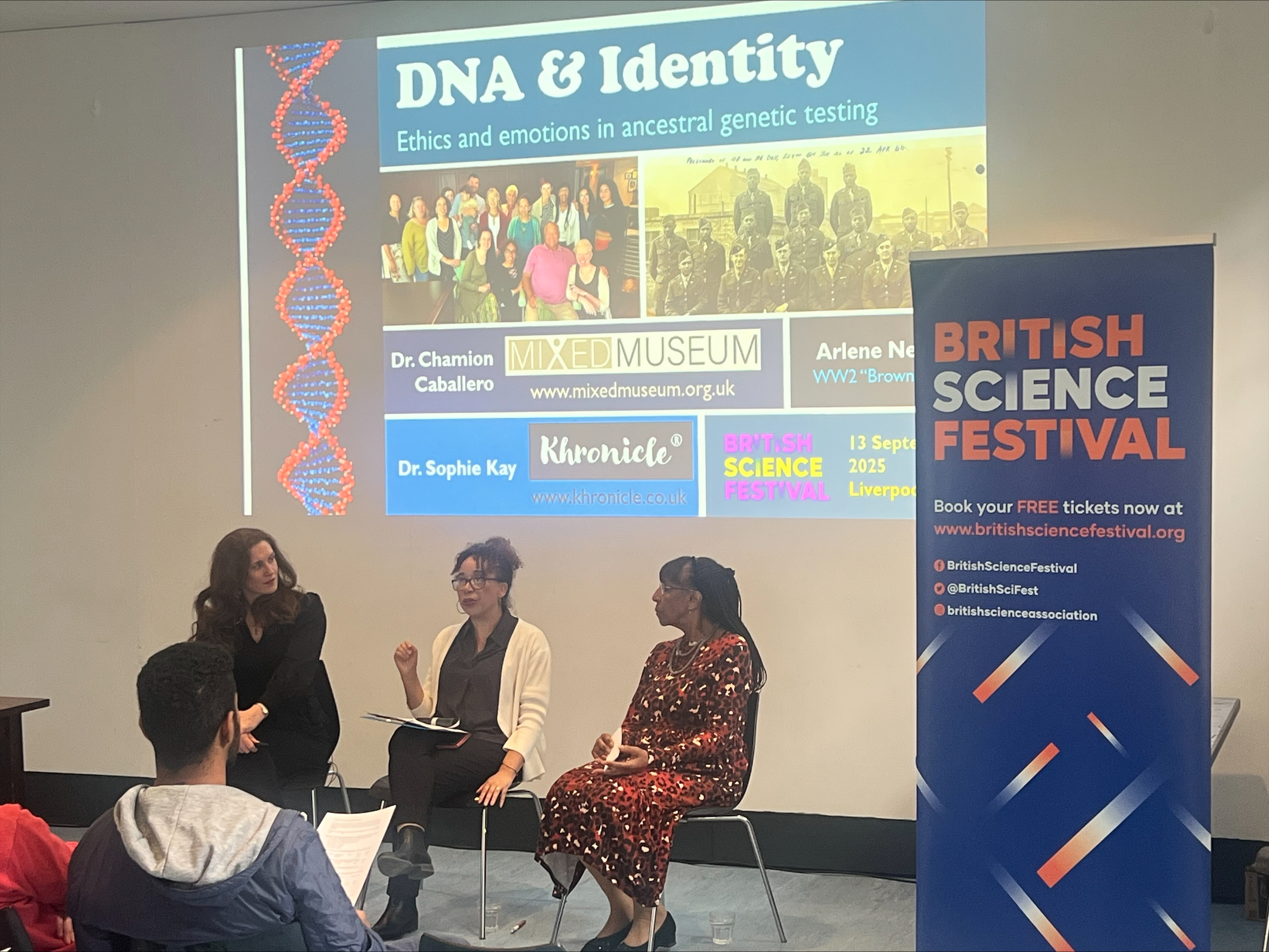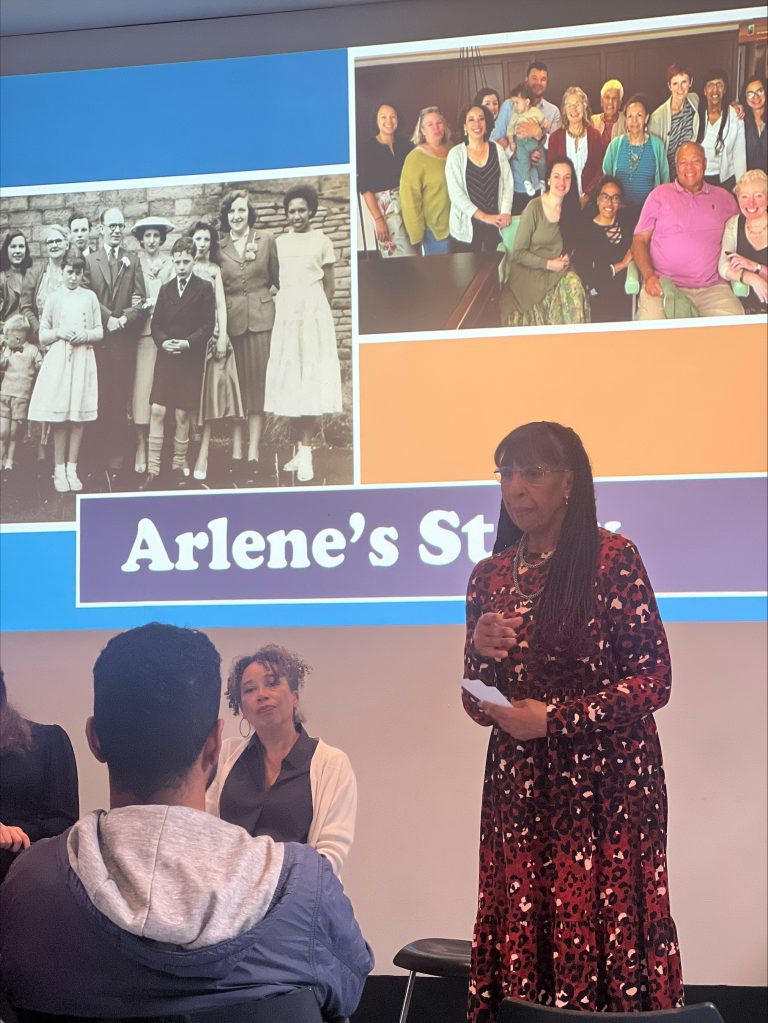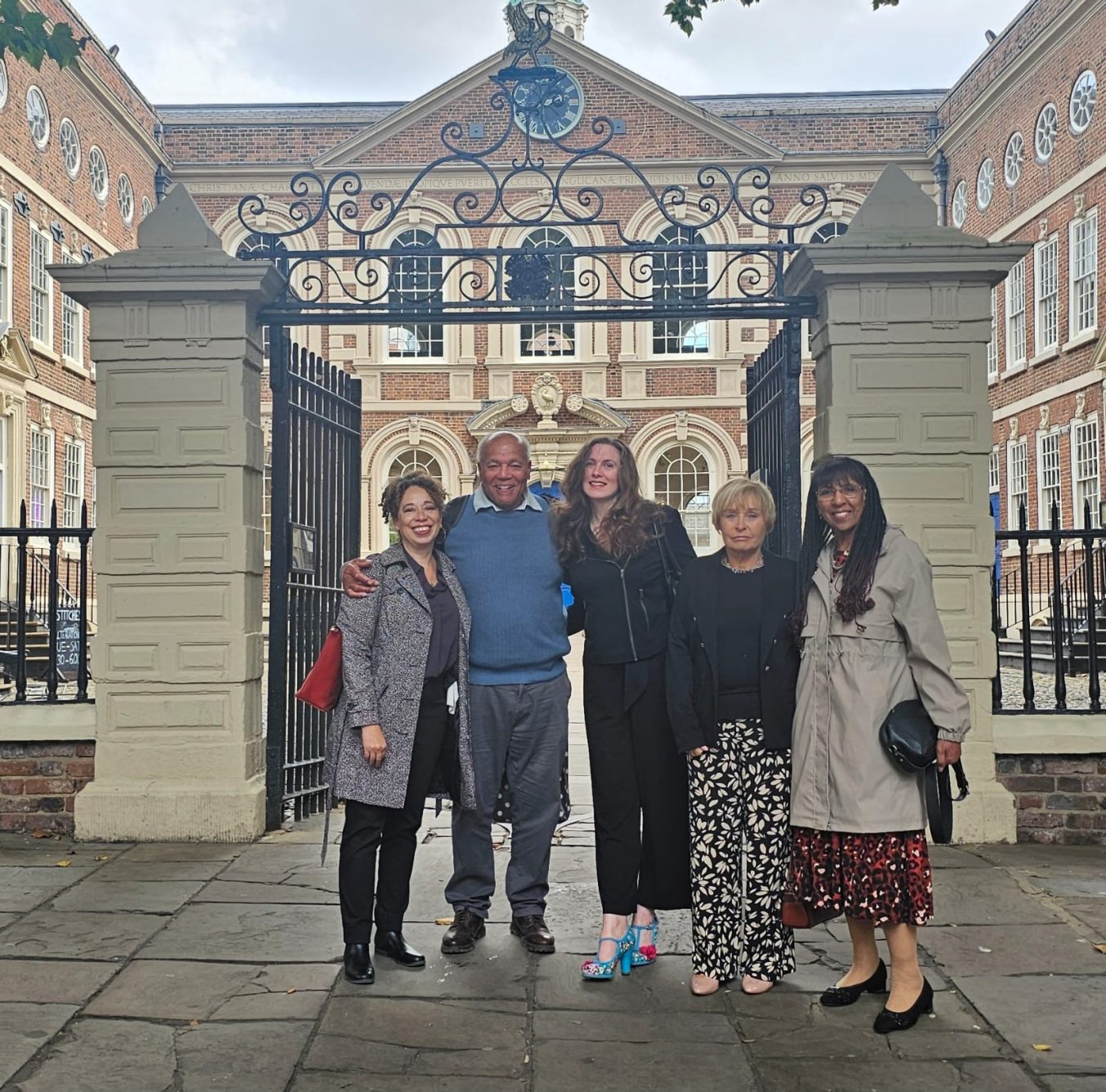The Mixed Museum at the British Science Festival 2025 in Liverpool
In September 2025, The Mixed Museum hosted a discussion panel at the British Science Festival (BSF) in Liverpool. TMM Director Dr Chamion Caballero and Scientist-in-Residence Dr Sophie Kay, BSF Co-Presidents for Medicine, were joined by WW2 ‘Brown Baby’ Arlene Nelson for the discussion DNA and Identity: Ethics and emotions in ancestral genetic testing. Together they opened up a powerful conversation on the science, ethics and emotions behind DNA ancestry testing that resonated strongly with the audience.

DNA and Identity: Ethics and emotions in ancestral genetic testing
The Mixed Museum had the privilege of contributing to this year’s British Science Festival, held in Liverpool, by hosting a panel on DNA ancestry testing on the afternoon of 13 September.
TMM Director, Dr Chamion Caballero, and Dr Sophie Kay – TMM’s first Scientist-in-Residence – were appointed Co-Presidents of the Festival’s Medicine Section in recognition of their work together on helping those who have become known as Britain’s ‘brown babies’ learn more about the science behind the DNA testing process that has transformed many of their lives. Born to Black GIs and white British women during WW2, many of this group - dubbed the ‘brown babies’ by the African American press – are using DNA testing to find family members. On the panel, DNA and Identity: Ethics and emotions in ancestral genetic testing, Chamion and Sophie were joined by WW2 ‘Brown Baby’ Arlene Nelson, who spoke movingly about her experience of using DNA to trace her American family.
The science behind DNA testing explained: Dr Sophie Kay
The session started with Chamion introducing both the panel and TMM’s work with Professor Lucy Bland, whose research underpins TMM’s ongoing work with the ‘brown babies’ community. Sophie, who is also Time Team’s resident genealogist, then delivered a clear and engaging introduction to DNA testing. Her talk explained:
- what DNA is and how it can be used to identify relatives,
- common myths about ethnicity estimates, and
- how test results can be interpreted in practice.
Using WW2 ‘Brown Baby’ Arlene Nelson’s own anonymised DNA chart, Sophie demonstrated how Arlene was able to identify her half-brother in America. For many in the room, it was the first time they had seen the science broken down so accessibly, while also connected directly to a lived experience.
The lived experience behind DNA testing explained: Arlene’s journey
Arlene Nelson then shared her personal story. She shared her experience of growing up in Mottram as the only mixed-race child in her large family and community. Yet, despite a happy childhood, she spent much of her adult life yearning to know the name of her father - a Black American soldier that her mother had met during the Second World War.
Arlene spoke about the challenges of family search work, especially the emotional weight of contacting relatives who might be unaware they had a new sibling or cousin. She emphasised that while DNA can open doors, connection is not guaranteed and journeys like hers take time, patience and resilience.

Community voices in the room: Terry Harrison
We were privileged to be joined in the audience by Arlene’s sister Sandra Gateley and by Terry Harrison, another WW2 ‘Brown Baby’ who, like Arlene, was part of TMM’s Reclaiming History Through Science project and whose story features in the documentary Terry’s GI Dad.
Reflecting afterwards, Terry told us:
“I specifically went to the Festival to listen to the presentations, but also to learn about the concept of DNA and hear about the importance it has played in the lives of individuals, notably that of Arlene Nelson. In addition to the excellent presentation by Dr Sophie Kay, a specialist in DNA analysis, the session was compered by Dr Chamion Caballero from The Mixed Museum. It was an amazing day for me to see so many interested people who wanted to know more about The Mixed Museum. I'm sure, had time permitted, they would have wanted to ask so many more questions, such was their interest in how important DNA testing was to the children and grandchildren of African American GI fathers. I spoke to one guest who wished the session could have lasted longer. Sophie's presentation seemed tailor-made for the audience. What a day!”

The Garden Room was filled to capacity, with around half the audience raising their hands when asked if they had taken an ancestry DNA test themselves. The discussion was lively and continued long after the official session ended, spilling out into corridors and onto the street!
That enthusiasm showed us just how much appetite there is for trusted, open conversations around the benefits and challenges of DNA testing—especially when rooted in lived histories.
This panel was another important step in TMM’s growing Scientist in Residence work, building on our Reclaiming History Through Science project (part of the Mindsets + Missions programme) and informed by Professor Lucy Bland’s groundbreaking research.
We look forward to continuing to work with Sophie, Arlene, Terry and the wider ‘brown babies’ community to share knowledge and first-person stories that connect science with identity, family and belonging.
Our thanks to the British Science Association for inviting Chamion and Sophie to be Co-Presidents for Medicine this year, as well as supporting TMM’s attendance at the festival. Huge thanks also to everyone who joined us, asked questions, and is continuing to keep the conversation going well after the end of the event.
Learn more
Read about Dr Sophie Kay’s Scientist-in-Residence role at The Mixed Museum
Learn about our Reclaiming History Through Science project exploring the role of DNA testing in ‘Brown Babies’ families
Watch our 'Brown Babies' DNA Histories YouTube interview series on DNA, identity and reconnecting families
Find out about the British Science Festival and its 2025 Section Presidents
Sign up to our newsletter for latest posts!
Enjoyed this article?
Sign up to The Mixed Museum’s newsletter to stay updated when new blog posts like this go live. We send highlights from the museum's collection, links to new articles, and other interesting updates direct to your email inbox once a month.

